Family holidays in Saxony
It's hard for the average person to remember anything about Saxony right off the bat. But that just means you'll learn many new things on your trip. For example, the recipe for Dresden Stollen was invented here, and children get Prune Men for Christmas. Or that there are ski resorts in the Ore Mountains. Or that the beautiful Dresden palaces, which lay in ruins after the bombing of World War II, have been dismantled and reassembled. All in all, if you love discovery, a family holiday in Saxony will bring much joy.
Museums and medieval castles, mountains and lakes, the best children's attractions and certified family hotels — everything you need to know about holidays with children in Saxony can be found in Kidpassage's review.
Saxony on the map of Germany
The Free State of Saxony is one of the federal states of Germany. It is located in the eastern part of the country, on the border with Poland and the Czech Republic. In the north, it borders with the federal states of Brandenburg and Saxony-Anhalt, in the west — with Thuringia, in the southwest — with Bavaria. Dresden is the capital city of the German state of Saxony.
The distance from Dresden to Berlin is 190 km, to Magdeburg — 230 km, to Erfurt — 220 km, to Munich — 465 km, to Prague (Czech Republic) — 145 km, and to Wroclaw (Poland) — 270 km.
Saxony for Kids
 Photo: pixabay.com
Photo: pixabay.com
If you come across cheap flights to Dresden, buy them and go to Saxony with kids. And even if there are no discounts, this federal state still deserves a visit, and we will give you 5 arguments.
- Excellent international connections. Whether you choose public transport or drive your car, the journey will leave only pleasant impressions.
- Mild climate. The land where grapes grow and fine wines are made is warmed by the sun. Even if the forecast promises rain, the sky will still clear up afterwards.
- Impressive programme. Saxony for children is not so much about entertainment as it is about legendary castles, the fairy tales of the Ore Mountains and the magic of Christmas fairs. But this, of course, is accompanied by all sorts of museums, attractions, lake holidays and skiing.
- The brand "Family Holidays in Saxony". Hotels, restaurants and other facilities which have this label are as convenient as possible for parents with an infant or toddler. However, ordinary hotels also offer quality service.
- Recovery. Climatic, mineral and mud spa resorts allow full-fledged rest with a child undergoing treatment. Modern rehabilitation clinics and recovery centres are located in picturesque places.
Best time to travel
 Photo: pixabay.com
Photo: pixabay.com
The tourist season in Saxony is divided into summer and winter. Summer is attractive because of the warm weather. It favours various activities, from sightseeing in the city to hiking in the mountains or river rafting.
Many festivals are timed to coincide with summer. Dresden celebrates its City day in August on a grand scale, and the parade of wheeled steamers alone is worth a lot. In Leipzig, several days in August are devoted to the Water Festival, which is bright and mischievous. The summer cultural program also includes concerts of academic and modern music, performances, exhibitions, and sporting events.
The bathing season in Saxony is short, from the end of June to the end of August. The water is not very warm for those who are used to the seas of Turkey or Egypt, but locals open the beach season as early as May and enjoy sunny weekends to relax on the river or lake.
Winter is a wonderful time for a holiday with a child, and above all, because of the beauty of Advent, the Christmas and New Year period. The Saxons say that Christmas is like the fifth season here. Dresden and Leipzig are home to the oldest Christmas fairs in Germany, which set the tone for the festivities from the end of November.
The local traditions of celebration are quite unusual. At fairs, a tiered pyramid with figurines is obligatory, and the same pyramids with a wheel rotating from the heat of candles decorate the house. There is always a figurine of the prune man in the squares, and edible copies of him are sold at every turn.
To take the Saxon Christmas spirit away with you, you can buy an Upper Lusatian 25-ray star, a scented pyramid from the Ore Mountains and, of course, a delicious Dresden Stollen, which months of storage are only good for.
In February, like all of Germany, Saxony is buzzing with carnivals. Dresden approaches their organisation in its way: the most daring participants in carnival costumes swim along the Elbe.
Sleigh rides and skiing in the Ore Mountains will diversify your winter trip. Saxony does not have such large ski resorts as in the Bavarian Alps, but there are a dozen tracks of varying difficulty on the Fichtelberg mountain — the highest in the region.
It is better to come to Saxony with a baby from May to September while the weather is warm enough. Spring and autumn are calmer, and there is a more considerable influx of tourists in summer. However, there is almost no added noise and bustle in the cities due to the high season.
Weather is another factor in deciding when to go to Saxony. What to expect from it, read in the next section.
Weather and climate
 Photo: pixabay.com
Photo: pixabay.com
The climate of Saxony is considered to be temperate continental but has some maritime features. Summers here are warm and somewhat rainy, while winters are mild and wet. The cities are more likely to have rain, but the mountains are usually covered with snow. The weather in the region is changeable; no two days are alike.
The high season in Saxony starts in June when the daytime temperatures range from around 18°C to 25°C (64°F to 77°F), while nights are milder, averaging between 10°C to 15°C (50°F to 59°F). July and August are the warmest months, with daytime temperatures often reaching between 25°C to 30°C (77°F to 86°F) or even higher. Nights are relatively mild, usually staying above 15°C (59°F).
Summer in Saxony experiences moderate rainfall, often in the form of brief showers or thunderstorms. However, the region generally sees less precipitation compared to other seasons. Of course, it is not tropical downpours, but 5-7 days can be with precipitation. You should bring umbrellas and waterproof shoes when travelling. Summer offers plenty of sunshine, with long daylight hours, which is ideal for exploring Saxony's scenic landscapes, whether hiking in the Saxon Switzerland National Park, exploring historic cities like Dresden and Leipzig, or enjoying outdoor festivals and events.
In early autumn (September) temperatures start to cool down from the summer highs. Daytime temperatures typically range from 10°C to 18°C (50°F to 64°F), and nights can be cooler, ranging from 3°C to 10°C (37°F to 50°F). Many people consider the beginning of autumn to be the period for the best holidays in Saxony with children because calm returns to the region and the weather is still conducive to outdoor activities. In late autumn (November) temperatures continue to drop as autumn progresses. Daytime temperatures range from 3°C to 9°C (37°F to 48°F), and nights can be chilly, often dropping below freezing.
In October-November, there are more frowny and windy days. Closer to winter, night frosts are possible.
Autumn in Saxony sees moderate rainfall, with occasional showers and drizzle. Rainfall tends to increase as the season progresses, especially in November. Foggy mornings are common, especially in low-lying areas and near bodies of water.
Days are gradually becoming shorter as autumn progresses. Expect fewer daylight hours and shorter periods of sunshine as you move deeper into the season.
If you are planning a winter holiday in Saxony, you should dress warmer, although the forecast promises +1-10°C during the day and a slight frost at night. In wet weather, being outside without a hat, a scarf and an airtight jacket is not very comfortable. Weather days are few, and the sky is often covered with clouds.
Spring in Saxony offers a wonderful transition from winter to summer, allowing visitors to witness the beauty of nature's rebirth while enjoying the pleasant weather and engaging in various outdoor activities. Spring begins with temperatures gradually rising. Already in March, daytime temperatures range from 5°C to 10°C (41°F to 50°F), and nights can still be quite chilly, often dropping to around 0°C to 5°C (32°F to 41°F). In April, temperatures continue to rise, with daytime averages between 10°C to 15°C (50°F to 59°F). Nights become milder, generally ranging from 3°C to 8°C (37°F to 46°F). In May, spring fully takes hold, and temperatures become pleasantly mild. Daytime temperatures often range from 15°C to 20°C (59°F to 68°F), while nights generally stay above 8°C (46°F).
Spring is perfect for exploring Saxony's picturesque landscapes, national parks, and hiking trails as the weather warms up and nature comes to life.
Water temperature
The Saxons like to go to the Mediterranean Sea during the holiday season. But they seem to enjoy their holidays on the banks of rivers and lakes just as much. And not only sunbathing but even swimming, although the water temperature in Saxony is rarely above +20°C. Instead, you can count on the fact that in June, the water warms up to +16-17°C, and in July-August to +18-19°C.
Getting Around
 Photo: pixabay.com
Photo: pixabay.com
Public transport in Saxony is as good as in the rest of Germany. There are buses and trams in the towns, and in the larger cities, trains connect the centre with the suburbs. Dresden also has ferries, steamboats, a funicular railway and a cable car. Timetables and routes are published on the carriers' websites, and the time until the arrival of the transport can also be seen at the stops.
Many public transport services in Saxony have a single ticket. The approximate cost of a short trip is 2.5-3 euros, a ticket for a whole day without limitation of trips and transfers costs 7-8.5 euros, and a family pass for a day costs about 11 euros. Tickets for children 6-14 years old are half the price, and preschoolers do not have to pay for the journey, but be prepared to show a document to prove the child's age.
In Dresden and Leipzig, tourist cards allow free travel and free or discounted admission to museums.
Saxony is home to picturesque train routes that showcase the region's breathtaking landscapes. Enjoy a delightful journey through lush countryside,charming villages, and scenic valleys. Capture the beauty of Saxony from the comfort of your train seat. The Sachsen Ticket for one day costs approximately 27 euros, and up to 3 children aged 6-14 can travel free of charge with an adult. The Sachsen Ticket is valid on weekdays from 9:00 a.m. to 3:00 a.m. the next day and on weekends and public holidays from midnight to 3:00 a.m. the next day.
Car hire is well established and can be arranged online before arrival, at the airport or the final destination. Carsharing is also becoming increasingly popular.
Food
 Photo: pixabay.com
Photo: pixabay.com
Eating at the restaurants or cooking for yourself — either approach will be convenient in Saxony.
If you prefer catering establishments, look out for traditional Saxon specialities. Sauerbraten is a German pot roast, commonly made with beef or pork, marinated in a mixture of vinegar, water, and spices. It's a flavorful and tender dish often served with red cabbage and potato dumplings. Sächsischer Sauerbraten is a unique version of Sauerbraten in Saxony, typically made with beef and served with a sour gravy and red cabbage. It is unsuitable for baby food.
But vegetable Leipziger Allerlei can be offered to a child; only for the younger ones, choosing a version without crayfish or shrimps is desirable. This dish originating from Leipzig, consists of mixed seasonal vegetables such as peas, carrots, asparagus, and more, often served with fresh herbs and butter. A child will gladly eat quark cheese and potatoes pancakes Quarkkäulchen.
Of course, it is hard to ignore the special Saxon desserts. The famous Christmas stollen is at the top of the list — the longer it lies around, the more delicious it becomes. Pulsnitz gingerbread also exudes the flavour of Christmas, and while the stollen takes about a month to mature, the dough for gingerbread is prepared half a month before baking. We recommend you find out what Leipzig larks (The Leipziger Lerche) are and what the charm of Eierschecke pie is during your trip.
Self-cooking will be easy because the assortment of products in markets and supermarkets is almost familiar. You can buy baby food in shops and pharmacies. In Saxony, shops are open longer than in many other federal states. Still, you should remember that supermarkets close earlier on Saturday and may not be available on Sunday.
What to do with Kids
A family holiday in Saxony rarely turns into an all-out run through museums. It's more about relaxing — walking, looking around, indulging in carefree fun at an amusement park, travelling along mountains and rivers. Here are a few ways to have a good time with your child.
The best entertainment for the whole family
 Photo: belantis.de
Photo: belantis.de
The fact that the Belantis amusement park in Leipzig is not one of the top 10 parks in Germany is just an unfortunate misunderstanding. Belantis is the largest amusement park in Saxony, offering a variety of rides, roller coasters, themed areas, and attractions suitable for all age groups. It is a perfectly arranged place with themed zones, 60 modern rides, colourful performances and children's playgrounds. A day in the park will be filled with joy and adventure.
"Klein-Erzgebirge" (Oederan) is a miniature park showcasing replicas of various historic buildings and landscapes of the Erzgebirge region, providing an educational and enjoyable experience.
Saurierpark Kleinwelka (Kleinwelka) is a dinosaur park featuring life-sized dinosaur replicas, interactive exhibits, and a themed playground for children.
But there are no large water parks in this federal state. However, relaxing in the Elbamare complex in Dresden on a summer day is nice. There's a spiral slide, a children's pool, a swimming pool and a whirlpool. Part of the complex is indoors so that you can relax in winter.
In Neustadt, 40 kilometres from Dresden, there is a similar Mariba Freizeitwelt Neustadt. The water in all the pools is heated, so if the weather in June and August is not too warm, it will not interfere with swimming.
But 50 km from Leipzig, in the neighbouring federal state of Saxony-Anhalt, there is a water park, Maya Mare. Its decorations play on the motifs of Aztec and Mayan culture. As for entertainment, there are four different slides, an excellent adventure town for children, a "Lazy River", and wave and bubble pools. You can relax in the indoor part or the open air.
Places for walking
 Photo: zoo-dresden.de
Photo: zoo-dresden.de
Children love to visit zoos, and there is plenty to see in Saxony.
Nestled in the heart of Dresden, the Dresden Zoo is a captivating destination that seamlessly blends entertainment, education, and conservation. The moment you step into this lush sanctuary, you're greeted by a vibrant tapestry of wildlife from around the globe. The zoo's well-designed enclosures provide a glimpse into various ecosystems, allowing visitors to witness the beauty and diversity of both familiar and exotic species. From majestic big cats to playful primates and graceful aquatic creatures, each animal appears content and well cared for in their carefully crafted habitats.
Leipzig Zoo is one of the world's oldest and most renowned zoological parks, dating back to its foundation in 1878. The zoo boasts diverse animal exhibits that recreate natural habitats for its residents, allowing visitors to observe and learn about animals in near-natural conditions.
Wildpark Leipzig is a vast wildlife park where visitors can observe and interact with various animals, including deer, wild boars, and birds of prey. It's an ideal spot for a family day out in nature.
Tierpark Chemnitz, a charming zoo in Chemnitz, is home to a diverse collection of animals. It provides an enjoyable and educational experience, making it a great place for a family visit.
If you are used to walking in parks, holidays with small children in Saxony will not break your traditions. Parks in the cities are spacious well-maintained, with playgrounds. Spend a few hours in Dresden's Great Garden and check when the small puppet theatre will play.
The people of Leipzig love the Clara Zetkin Park, which has everything they need for family fun. And they are familiar with Lake Auensee, where the children's railway runs alongside it.
And a few more ideas for things to do in Saxony with a child. There are rope parks in Markkleberg and Naunhof, a course for the new game SupaGolf in Bad Düben, and a complex of Kulturinsel Einsiedel huts in Neisseauen that serve as a museum, play space and hotel.
Beach Holidays
 Photo: pixabay.com
Photo: pixabay.com
Beach holidays with a child in Saxony are a popular activity. The shore of any body of water, be it the Elbe in Dresden or a small artificial lake, is improved, and often a campsite or small hotels are built nearby.
Sandy beaches are uncommon, and grassy shores predominate. You can count on sunbeds and umbrellas on equipped beaches and a small cafe. A top-rated service is boat hire because many people like to go for a water walk or fishing from a boat. There are often water amusement parks and children's playgrounds along the coast.
About a dozen small beaches have been created on the Elbe within Dresden. You can also go outside the city to one of the lakes, such as the large artificial lake Senftenberger. A pine forest surrounds it; cycle paths, hotels, guesthouses and camping sites are nearby.
In Leipzig, a pleasant recreation area is located on Lake Auensee. It beckons with a range of recreational activities, making it an ideal destination for a day surrounded by nature or a peaceful weekend getaway. Whether you're seeking water adventures or a tranquil lakeside picnic, Lake Auensee offers an array of experiences amidst the stunning outdoors.
On the Kulkwitzersee, special attention is paid to active holidays. There is everything you need for diving, sapsurfing, and water skiing. The spacious lakeside areas are perfect for picnics, social gatherings, or simply unwinding with a good book in hand. Kulkwitzersee is a haven for birdwatchers, offering an opportunity to observe a diverse array of bird species in their native habitat.
Next to the Markklebergersee, there is a rope park. But the highlight is the rafting park with artificial rapids on which you can raft on rubber boats.
Alpine skiing in Saxony
 Photo: pixabay.com
Photo: pixabay.com
Saxony, while not famed for towering peaks, is home to several ski resorts that offer exciting winter adventures for skiing enthusiasts.
It has several mountain ranges: the Ore Mountains, the Elbe Sandstone Mountains (aka Saxon Switzerland) and the Lusatian Mountains. The Fichtelberg mountain, with a height of 1215 metres, is the highest point of the Ore Mountains and has become a good ski resort. It is small; one day's skiing is enough, but it is a great way to diversify your winter holiday in Saxony.
The skiing season on the Fichtelberg runs from mid-December to early April. There are 15 kilometres of pistes on the mountain's slopes: almost half of them are blue runs, but there are also a few red runs and one black run.
A gondola, chairlift and four rope tow lifts lead to the starting point. There is a snow park on the slopes and a ski school. The price of an adult ski pass for one day is about 40 euros, children's — 30 euros.
In Oberwiesenthal, which lies at the foot of Fichtelberg, chalets, apartments, and guest houses are available for rent. The accommodation is mainly located close to the ski lifts.
Ski holidays in Saxony with children are popular, and there are many places where one or two slopes are equipped. In Altenberg, for example, families go on weekend skiing and sledging holidays.
he Best Things to See in Saxonia
A tour programme in Saxony doesn't look like moving from one museum to another. Instead, it is like a puzzle that must be thoughtfully assembled. Today, you can visit the museum exposition; tomorrow, you can go to the castle and then go to the mountains — to get acquainted with the work of quarries and admire how the wind has worked on the rocks. There are exciting places for children everywhere, and adults will find attractions they like.
Museums
 Photo: skd.museum
Photo: skd.museum
Another nice fact about holidays in Saxony with children: almost all the leading museums are free for children under 16. Tourist cards, such as the Dresden City Card, provide additional savings.
In Dresden, palaces are an obligatory point of excursion. For example, the palace residence can be visited for a long time from inside and outside: there is a tiled panel "Procession of Princes", and the Watchtower, and luxurious interiors, destroyed by bombing during the Second World War and restored with the use of ancient technologies. And then you can head to the Armoury, the Green Vault treasury or the Numismatic Cabinet.
If you want to show your child Raphael's Sistine Madonna, visit Dresden's Old Masters Gallery in the Zwinger complex. And more modern art is on display at the New Masters Gallery in the Albertinum building.
The Hygiene Museum presents an entirely different kind of exhibition. It focuses on how the human body and other living things work.
We recommend visiting the Volkswagen exhibition centre Die Gläserne Manufaktur, the Transport Museum and the Railway Museum for technology fans.
Leipzig has a large Egyptian museum and a very good Natural History museum, and a trip to the ethnographic museum is like a journey across all continents. The Unikatum and Inspirata museums await children who ask thousands of questions and like to find the answers themselves.
Small towns
 Photo: pixabay.com
Photo: pixabay.com
Small towns with history always beckon to sophisticated tourists. Saxony has them, too; you've heard of at least one. We are talking about Meissen, where a porcelain factory appeared in the XVIII century. Visiting the Meissen Porcelain Factory offers an educational and fascinating experience for children. They can witness the process of creating delicate porcelain pieces and gain insight into this traditional craft. The city was a royal residence four centuries earlier and is considered the cradle of Saxony. The symbol of those times is the beautiful Albrechtsburg Castle.
Torgau, nestled northeast of Leipzig, offers a delightful fusion of history, culture, and attractions that resonate with families. This quaint town often escapes the tourist radar but holds significant allure for those in pursuit of a memorable family vacation. Torgau has a different flavour: its buildings are examples of Renaissance architecture. Hartenfels Castle, which became the centre of the Protestant Reformation, is now a museum.
Nestled graciously along the banks of the Elbe River, Torgau boasts an enchanting natural setting. Families can relish leisurely strolls by the river, capturing breathtaking vistas and savoring the serene ambiance. It offers a medley of family-centric activities, making it an ideal destination for children across all age groups.
The town of Pirna is also worth a visit in Saxony with a child. It's a picturesque town boasts a myriad of attractions that make it an ideal destination for families seeking an enriching travel experience. From historical marvels to natural wonders, Pirna offers a diverse range of activities and sights to cater to various age groups.Once a year, the townspeople gather in the market square to reenact a Canaletto painting. Old houses give the town a unique flavour, making it cute and cosy.
Bautzen surprises with its well-preserved medieval towers. Its historical old town is a delight to explore. Kids can wander through cobbled streets, admire medieval architecture, and learn about the town's fascinating history, including its role in the Middle Ages and as a cultural hub. Bautzen is located in a region with a significant Sorbian population, and the Bautzen Sorb Museum provides insight into Sorbian culture, history, and traditions. Kids can learn about a unique cultural heritage through interactive exhibits and displays.
Schwarzenberg is also on the list of things to see in Saxony, with its mighty castle. It has now been converted into a museum that tells about everything related to the Ore Mountains. Children will be fascinated by the mining train tour of the tin mine.
Of course, Freiberg is not to be missed: find out why it's known as the Silver City and where the mineral museum is.
And Radebeul is the centre of wine production. We recommend visiting the Wackerbarth Estate if you want to taste wine while admiring the vineyards.
Castles of Saxony
 Photo: facebook.com/Schloss.Weesenstein/
Photo: facebook.com/Schloss.Weesenstein/
Old castles are the best answer to what to see with children in Saxony if you want to expand beyond Dresden and Leipzig. There are more than 30 well-preserved sites: we have mentioned some of them, and here are some more beautiful places.
- Moritzburg Castle: Situated near Dresden, Moritzburg Castle is an iconic Baroque palace surrounded by a scenic lake. It's famous for its fairy tale-like architecture and was once a hunting lodge for the Elector of Saxony, Augustus the Strong.
- Albrechtsburg Castle: Located in Meissen, Albrechtsburg Castle is one of the oldest surviving examples of a Gothic castle in Germany. It overlooks the town and the Elbe River and is a symbol of Meissen's history and architecture.
- Konigstein Fortress: Perched high on a hill in the Saxon Switzerland National Park, Konigstein Fortress is a well-preserved castle with commanding views of the Elbe River. It's one of the largest hilltop fortresses in Europe and offers a glimpse into medieval military architecture.
- Colditz Castle: Known for its role as a prisoner-of-war camp during World War II, Colditz Castle is a formidable Renaissance castle. It's located in the town of Colditz and now houses a museum documenting its history.
- Pillnitz Castle and Park: Situated near Dresden along the Elbe River, Pillnitz Castle is an elegant Baroque palace surrounded by beautiful gardens. It's a picturesque site with a delightful blend of architecture and natural beauty.
- Schloss Weesenstein: Weesenstein Castle, set in the Ore Mountains, showcases a mix of styles including Gothic, Renaissance, and Baroque. It's known for its impressive location and historical significance.
- Lichtenwalde Castle: Lichtenwalde Castle, near Chemnitz, is a Baroque-style palace with stunning gardens. The interior is renowned for its ornate decorations and artwork.
- Augustusburg Castle: This UNESCO World Heritage Site near Chemnitz is a prime example of a Renaissance castle. It was a residence of the Electors and Kings of Saxony and features impressive halls, galleries, and a beautiful park.
- Scharfenstein Castle: Located in the Ore Mountains, Scharfenstein Castle is a well-preserved medieval castle with a museum showcasing the history and culture of the region.
- Schloss Rochlitz: Rochlitz Castle is situated in the town of Rochlitz and boasts a mix of Romanesque, Gothic, and Renaissance architecture. It overlooks the Zwickauer Mulde River and offers guided tours through its historic rooms.
The most famous cities
The question of where to go to Saxony with a child can be solved quite simply. Large cities with museums and entertainment are suitable if a short holiday is planned. The more time you have in reserve, the more opportunities to travel to small towns or prefer a quiet resort on the lake. Here are the central regions of Saxony for holidays with children — which one will appeal to you?
Dresden
 Photo: pixabay.com
Photo: pixabay.com
Traveling to Dresden with kids can be a fantastic family adventure, offering a blend of history, culture, and engaging activities. The central city of the federal state will please those with a sightseeing programme at the top of their agenda. Palaces, art galleries, museums — even if the weather is unlucky, you won't notice. From Dresden, it is convenient to go on trips around the neighbourhood to see castles and fortresses and visit the Ore Mountains and Saxon Switzerland. Tourists consider the large international airport to be an additional plus.
Leipzig
 Photo: pixabay.com
Photo: pixabay.com
Ask the kids which holiday resort in Saxony to choose. "One with a good amusement park", they'll answer — and you'll be on your way to Leipzig. In addition, it's easy to plan a varied programme as the city boasts beautiful parks and green spaces like Clara-Zetkin-Park and the Leipzig Zoo, offering a perfect setting for outdoor picnics and leisurely strolls. Families can explore the interactive exhibitions at the Leipzig Science Center Inspirata, inspiring curiosity and learning in children. Additionally, the Grassi Museum complex offers a variety of museums catering to different interests, from applied arts to musical instruments.
Chemnitz
 Photo: pixabay.com
Photo: pixabay.com
Formerly a major industrial centre and European Capital of Culture in 2025 is already a good recommendation for tourists. It is equally interesting to see Chemnitz's medieval town hall, the Kasberg district with its Gründer-era architecture, the industrial museum and the Felsendome mine. Chemnitz is also not far from the Ore Mountains.
Recreational holidays
The natural riches of Saxony include mineral and thermal waters, brine and mud. The mild climate, clean air and medicinal herbs enhance their effects. Let's list a few options, which Saxony resorts are suitable for holidays with children:
- Altenberg — recreational area in the Eastern Ore Mountains is known for its variety of leisure activities — hiking, cycling, skiing, cross-country skiing;
- Bad Brambach boasts natural health springs that are unparalleled globally, rich in iron, carbonic acid, many minerals, and highly prized radon.
- Bad Düben is a mud spa in the Saxon Heathland near Leipzig.
- Oberwiesenthal is a health resort at the foot of the Fichtelberg mountain, near the ski area;
- Rathen is a health resort near the Bastai Rocks.
There are modern rehabilitation and wellness centres, green areas, hiking and cycling trails.
 [email protected]
[email protected]


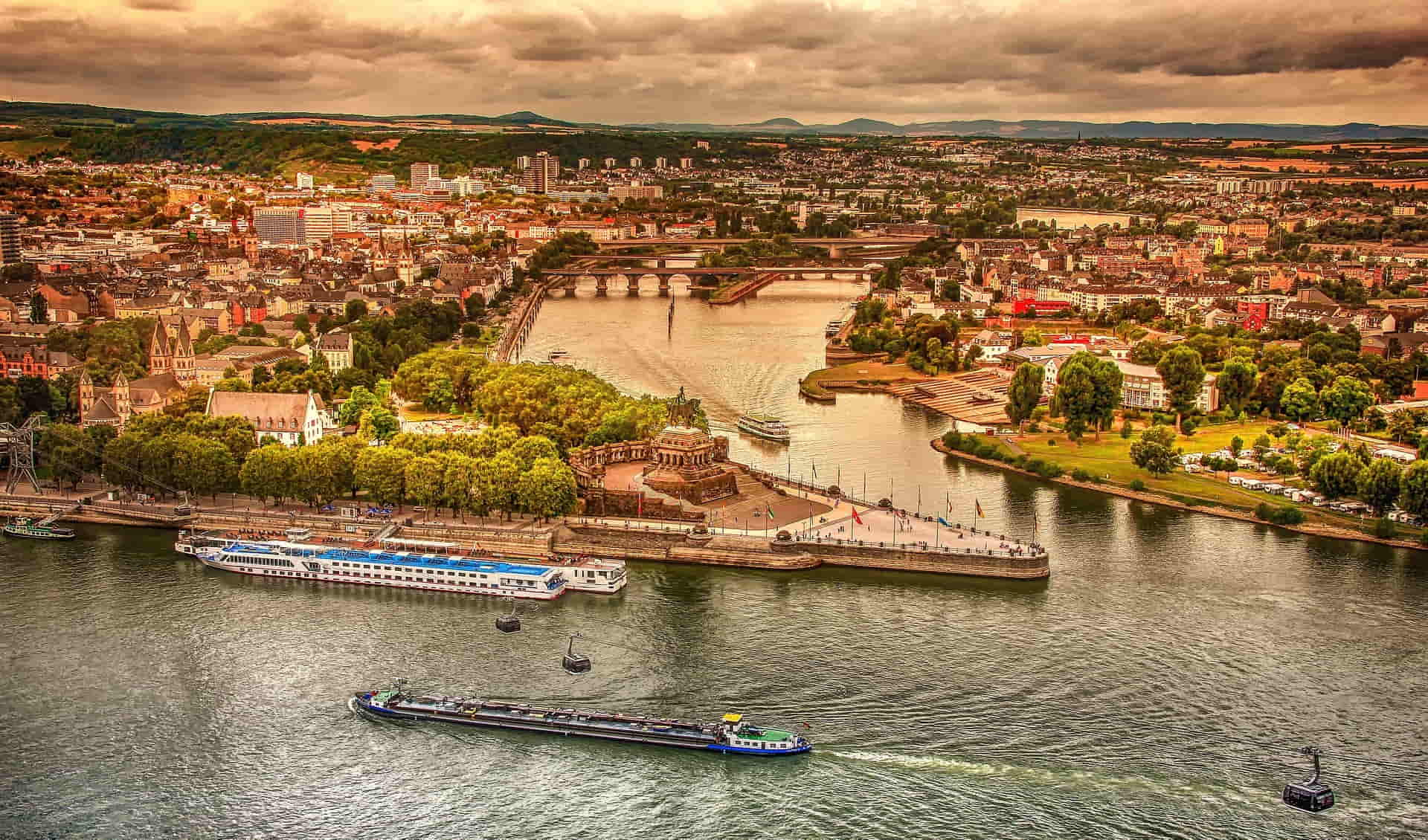



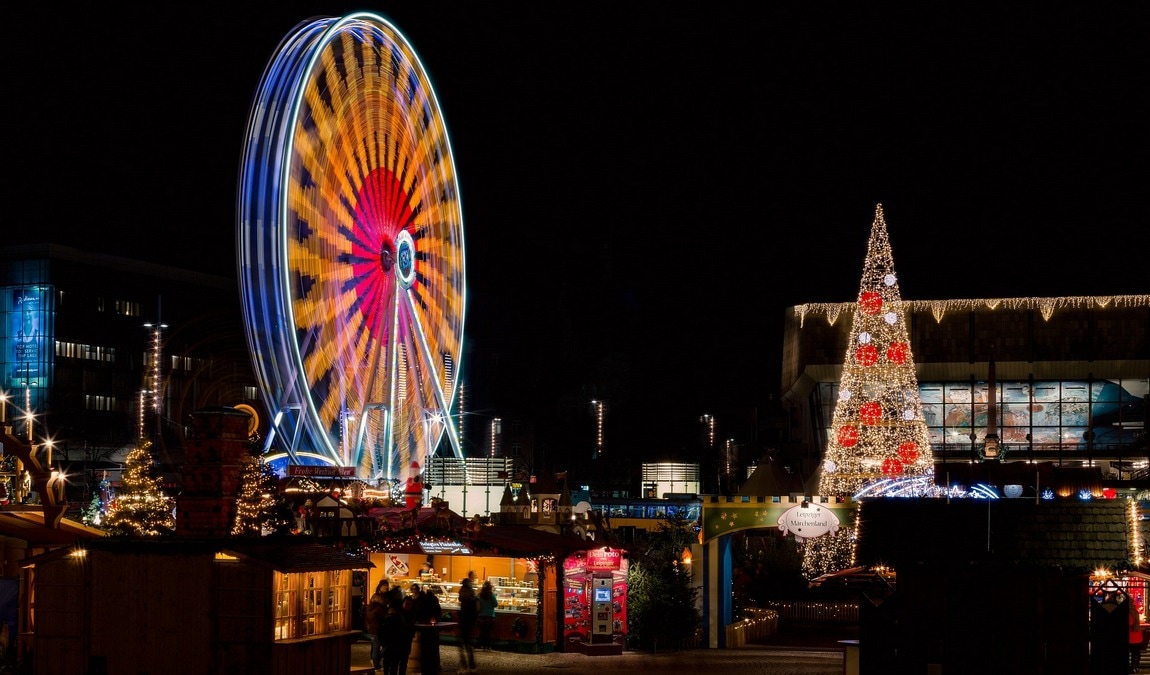
 Photo: pixabay.com
Photo: pixabay.com Photo: pixabay.com
Photo: pixabay.com Photo: pixabay.com
Photo: pixabay.com Photo: pixabay.com
Photo: pixabay.com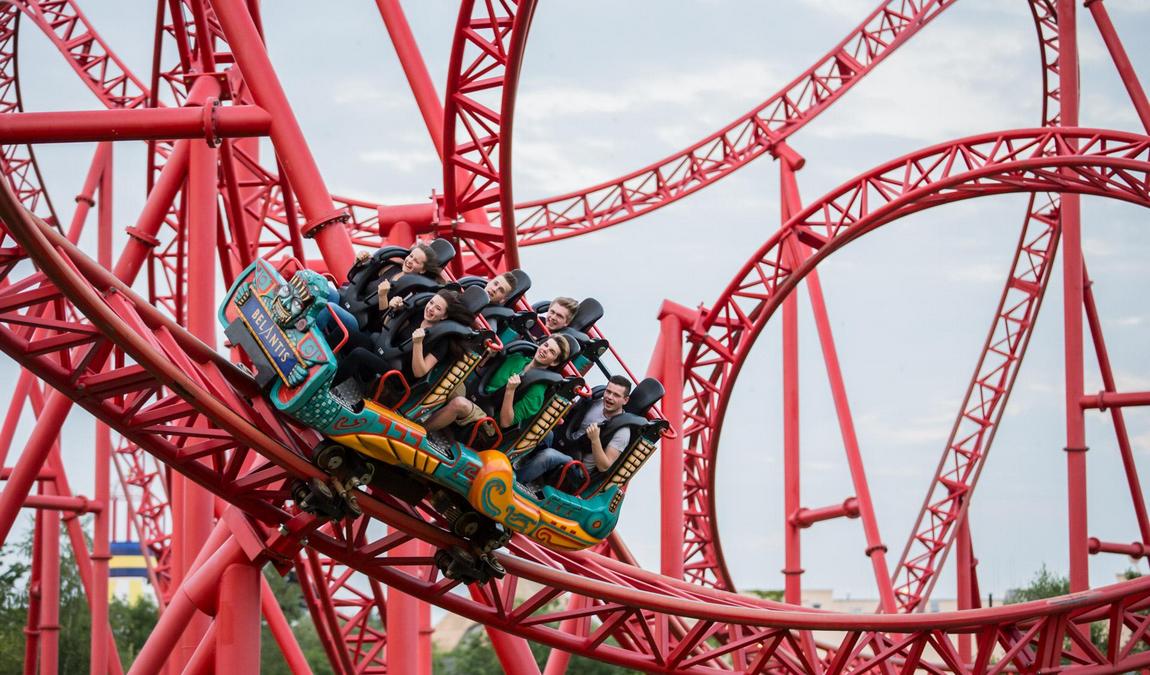 Photo: belantis.de
Photo: belantis.de
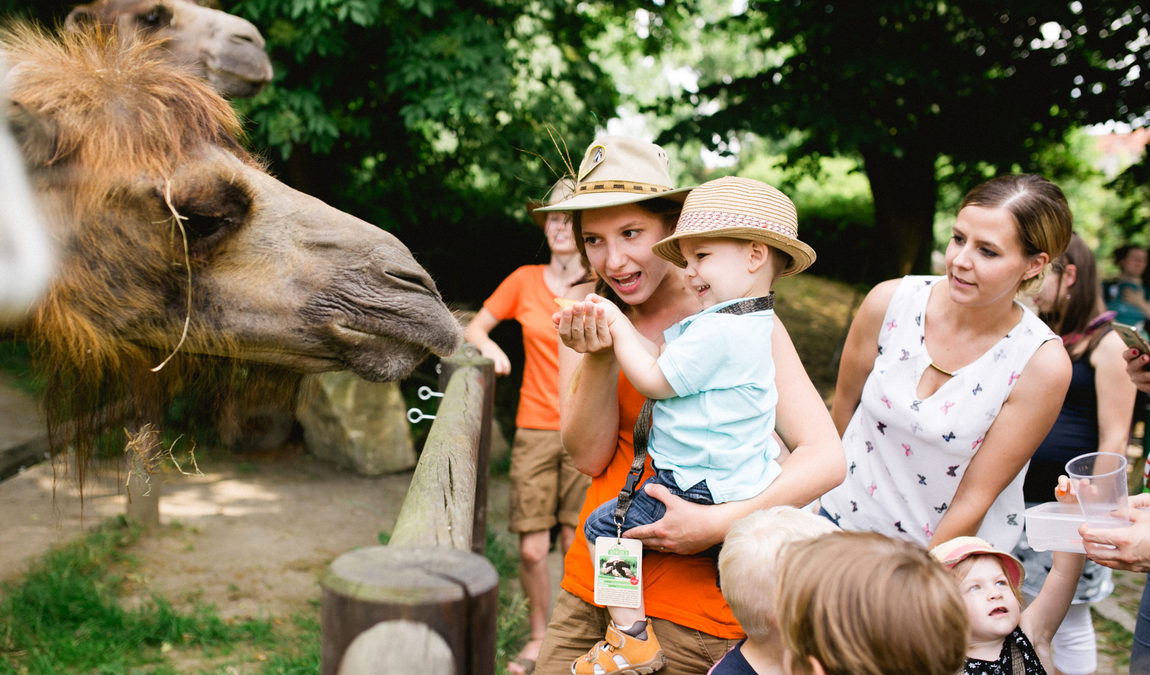 Photo: zoo-dresden.de
Photo: zoo-dresden.de
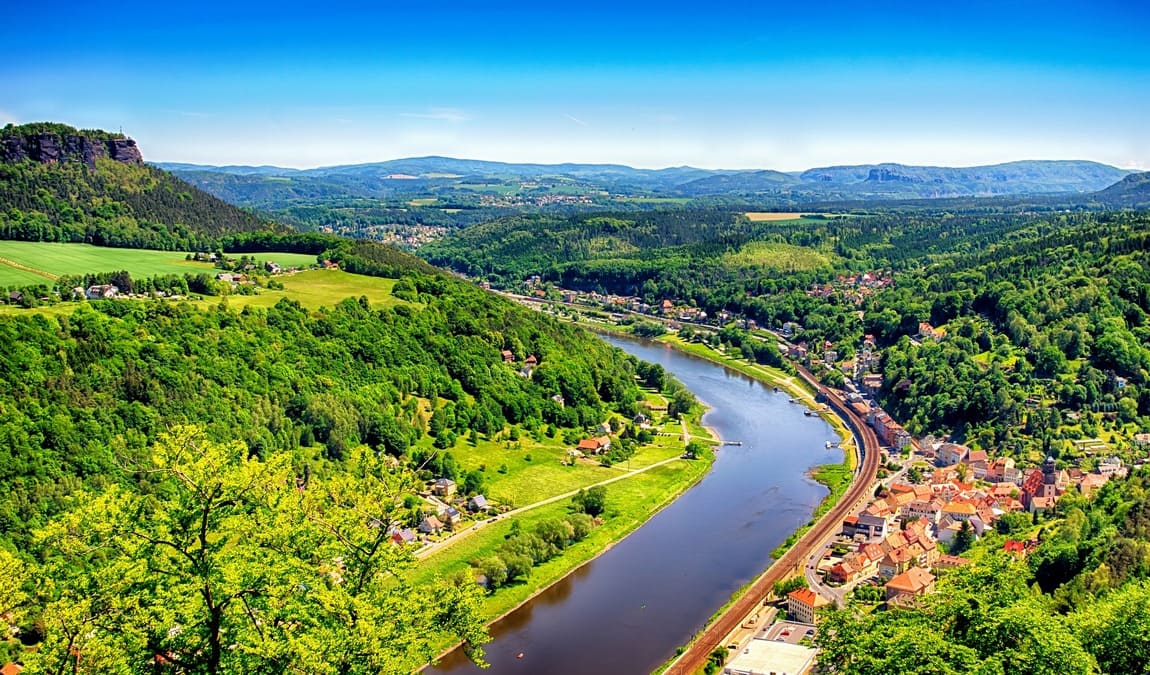 Photo: pixabay.com
Photo: pixabay.com Photo: pixabay.com
Photo: pixabay.com Photo: skd.museum
Photo: skd.museum
 Photo: pixabay.com
Photo: pixabay.com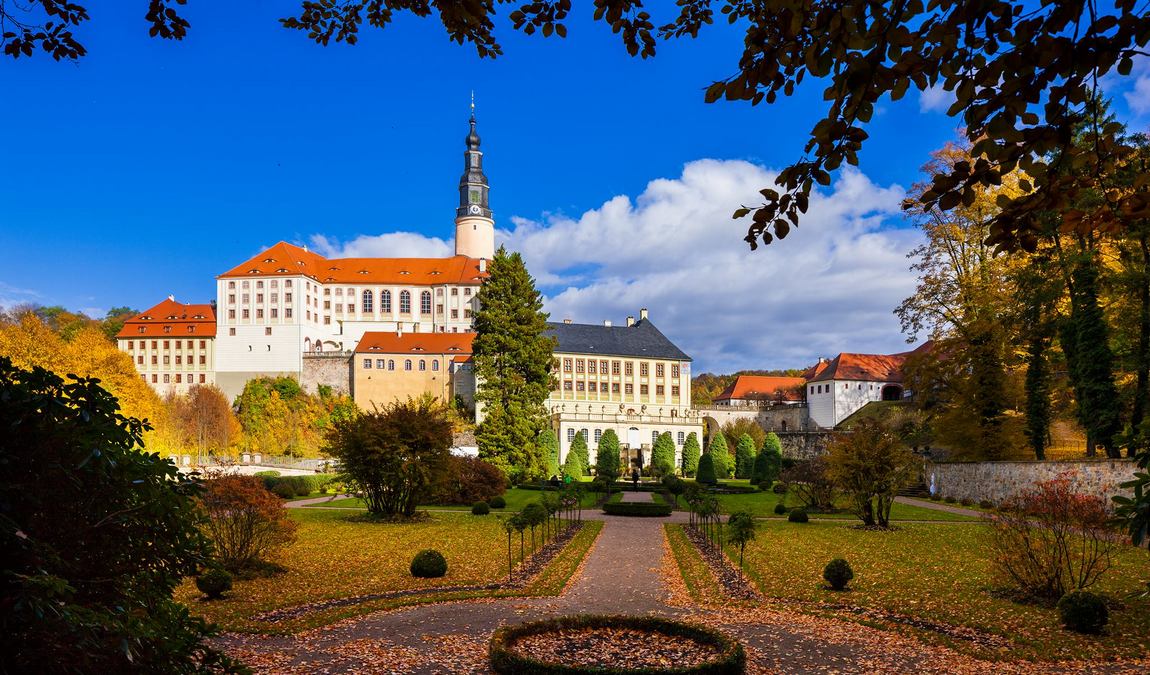 Photo: facebook.com/Schloss.Weesenstein/
Photo: facebook.com/Schloss.Weesenstein/
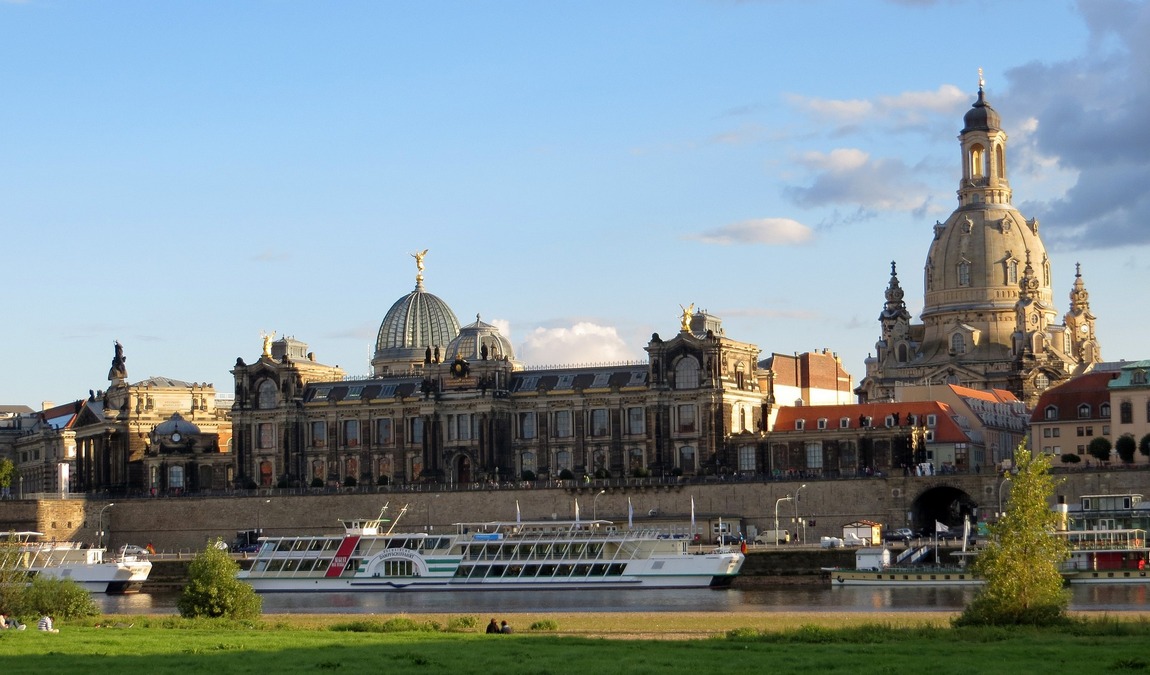 Photo: pixabay.com
Photo: pixabay.com Photo: pixabay.com
Photo: pixabay.com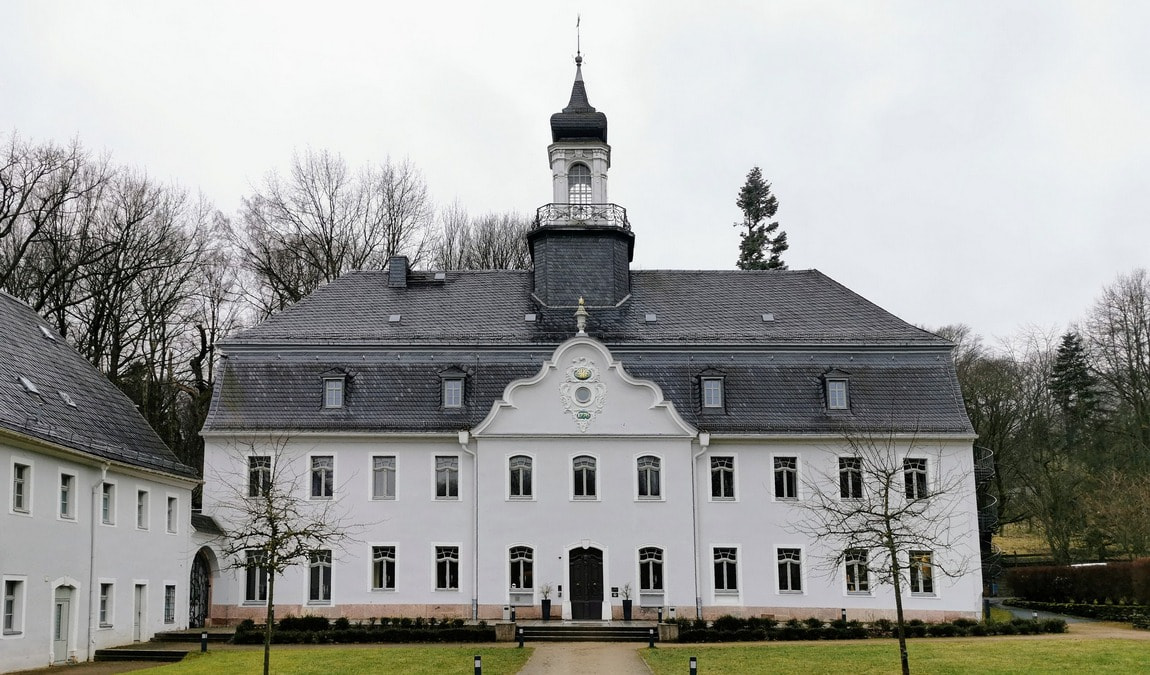 Photo: pixabay.com
Photo: pixabay.com




